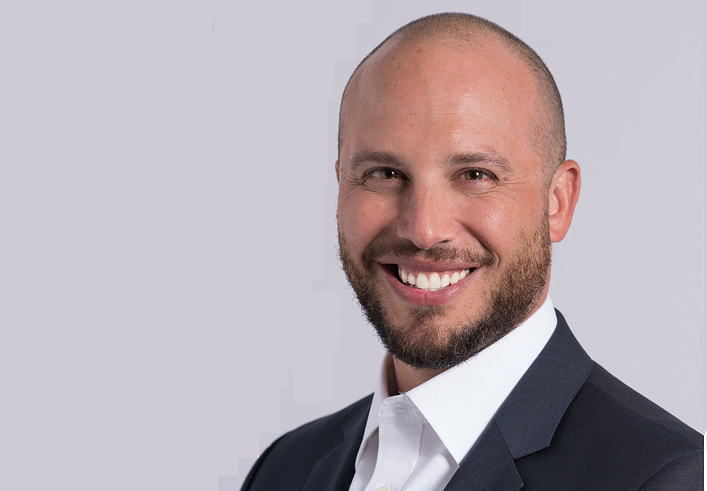 Just like the television marketplace in general, DR
advertising is evolving at a rapid pace. Scott Berger, General Manager, Direct
Response and Paid Programming at DISH
Media Sales, see DR, whether via linear or OTT, all part of the ecosystem. “Whether it’s delivered by a satellite or over
the internet, it is TV,” he explained, “We approach OTT in the same way we do traditional
television. Jumping into OTT is like partnering with an MVPD—you can buy a
broader rotation if needed or layer on targeting through an audience-based buy.”
Just like the television marketplace in general, DR
advertising is evolving at a rapid pace. Scott Berger, General Manager, Direct
Response and Paid Programming at DISH
Media Sales, see DR, whether via linear or OTT, all part of the ecosystem. “Whether it’s delivered by a satellite or over
the internet, it is TV,” he explained, “We approach OTT in the same way we do traditional
television. Jumping into OTT is like partnering with an MVPD—you can buy a
broader rotation if needed or layer on targeting through an audience-based buy.”
I have to admit that OTT DR is a new concept for me and so I
reached out to Scott for more information:
Charlene Weisler: How
new is OTT DR in the marketplace and how is it pacing?
Scott Berger: Buying
live and on-demand content over-the-top is still relatively new. Since dynamic
ad insertion was enabled at the end of 2015, we have seen the number of advertisers
grow rapidly as more inventory becomes available. Viewers are moving over to
OTT and advertisers follow eyeballs. I expect that advertising on OTT will
eventually become mainstream as traditional Pay-TV declines.
Charlene Weisler: Please
talk about the attribution chain in OTT DR. How does it work and what does it
provide an advertiser?
Scott Berger: OTT
provides extensive post-campaign measurement that allows advertisers to track
reach and frequency, Impressions, Network and device performance, video
completion rates as well as access custom measurement opportunities. Brands
that take advantage of addressable opportunities across OTT benefit from longer
attribution windows and access to more robust ROI reporting. Consumer behavior
is changing – people are picking up the phone to purchase less and less. When
is the last time you saw a 1-800 number and picked up the phone? With
addressable, we have factored in longer purchasing processes with attribution
windows from 30 – 90 days that take into account in-store purchases, website
traffic, etc.
Charlene Weisler: What
data can you collect and merge?
Scott Berger: To
enhance the intelligence within our DISH and Sling TV subscriber data sets, we
have partnered with the industry’s major data providers, from the more general
analytics companies, like Experian and Acxiom to specialized data vendors, such
as Polk and NCS. Our targeting
capabilities include, household demographics, 3rd Party Data, such as Purchase
Behavior, Lifestyle Behavior, or conquests, as well as first party data
including Customer List Matches, Promotional Sign-ups, Direct Mail Lists, or Loyalty
Programs. Specific to the programmer category, we’ve developed in-house tune-in
models to drive viewers to a program using anonymized viewership data and 3rd
party segments.
Charlene Weisler: How
do you guarantee privacy for consumers?
Scott Berger: Personally
Identifiable Information is not released to advertisers. We use
industry-standard encryption and technologies to keep personally identifiable
information anonymous.
Charlene Weisler: What
is the value proposition for OTT DR and does it vary from linear DR, from programmatic,
and from data driven advertising?
Scott Berger: DR
advertisers can no longer rely solely on traditional TV to drive action among
their consumer base. Due to the increasing numbers of cord-cutters, linear TV
buys are reaching fewer viewers and ads are not seeing the responses they once
did. OTT services, like Sling TV, that offer live and on-demand programming
give marketers the ability to serve ads to these hard-to-reach viewers and
close the cord-cutting gap. They also combat common digital pain points like ad
fraud, blockers and low completion rates by delivering a true television
experience to the consumer – just without the cord.
On OTT, ads are served via dynamic ad insertion (DAI) and
only air when the viewer’s device is on. With traditional non-targeted linear
advertising, brands can only hope that their target demo is watching a specific
channel at a certain time. With OTT, DAI finds the viewer and delivers the ad
only when they’re watching content—therefore increasing the value of
impressions served.
Charlene Weisler: How
is the latest technology helping OTT DR? (Like the use of pixels)
Scott Berger: New
attribution data such as pixels and mobile location data have allowed DR
advertisers to more effectively close the loop on addressable campaigns. A
brand can now send a 1:1 message to a Sling subscriber and determine whether
they went online to purchase or walked into a store.
Charlene Weisler: Where
do you see DR in general in the next three years and how large role will OTT be
in that?
Scott Berger: It’s
audience-based buying across live premium content. DR advertisers focus on who
their audience is and find that audience regardless of where they are in the
live stream. Over the past three years, we have been in the live OTT
marketplace essentially alone. In the past year or so, we have seen more
players enter as live sports and live news drive viewership.
This article first appeared in www.MediaVillage.com
No comments:
Post a Comment